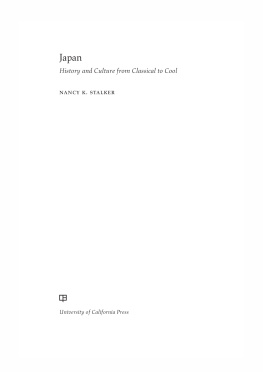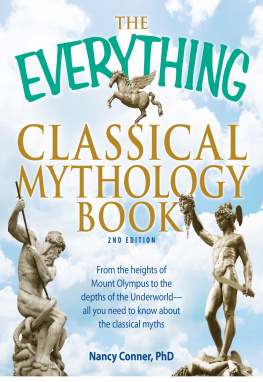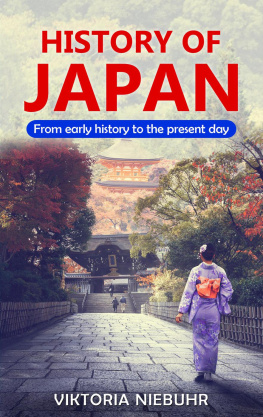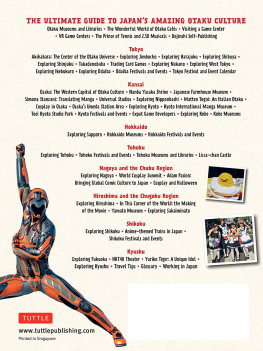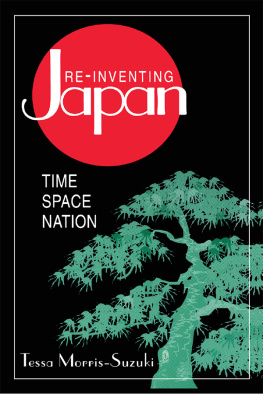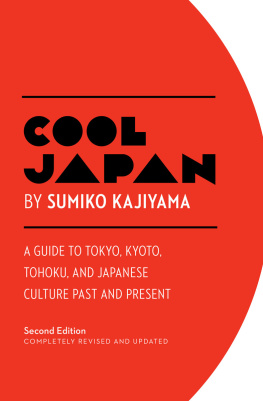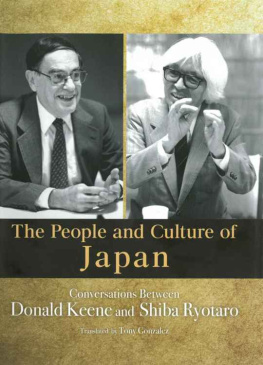Nancy K. Stalker - Japan: History and Culture From Classical to Cool
Here you can read online Nancy K. Stalker - Japan: History and Culture From Classical to Cool full text of the book (entire story) in english for free. Download pdf and epub, get meaning, cover and reviews about this ebook. year: 2018, publisher: Univ of California Press, genre: Religion. Description of the work, (preface) as well as reviews are available. Best literature library LitArk.com created for fans of good reading and offers a wide selection of genres:
Romance novel
Science fiction
Adventure
Detective
Science
History
Home and family
Prose
Art
Politics
Computer
Non-fiction
Religion
Business
Children
Humor
Choose a favorite category and find really read worthwhile books. Enjoy immersion in the world of imagination, feel the emotions of the characters or learn something new for yourself, make an fascinating discovery.
- Book:Japan: History and Culture From Classical to Cool
- Author:
- Publisher:Univ of California Press
- Genre:
- Year:2018
- Rating:3 / 5
- Favourites:Add to favourites
- Your mark:
- 60
- 1
- 2
- 3
- 4
- 5
Japan: History and Culture From Classical to Cool: summary, description and annotation
We offer to read an annotation, description, summary or preface (depends on what the author of the book "Japan: History and Culture From Classical to Cool" wrote himself). If you haven't found the necessary information about the book — write in the comments, we will try to find it.
Japan: History and Culture From Classical to Cool — read online for free the complete book (whole text) full work
Below is the text of the book, divided by pages. System saving the place of the last page read, allows you to conveniently read the book "Japan: History and Culture From Classical to Cool" online for free, without having to search again every time where you left off. Put a bookmark, and you can go to the page where you finished reading at any time.
Font size:
Interval:
Bookmark:

A

BOOK
The Philip E. Lilienthal imprint honors special books in commemoration of a man whose work at University of California Press from 1954 to 1979 was marked by dedication to young authors and to high standards in the field of Asian Studies. Friends, family, authors, and foundations have together endowed the Lilienthal Fund, which enables UC Press to publish under this imprint selected books in a way that reflects the taste and judgment of a great and beloved editor.
The publisher and the University of California Press Foundation gratefully acknowledge the generous support of the Philip E. Lilienthal Imprint in Asian Studies, established by a major gift from Sally Lilienthal.
NANCY K. STALKER

UNIVERSITY OF CALIFORNIA PRESS
University of California Press, one of the most distinguished university presses in the United States, enriches lives around the world by advancing scholarship in the humanities, social sciences, and natural sciences. Its activities are supported by the UC Press Foundation and by philanthropic contributions from individuals and institutions. For more information, visit www.ucpress.edu.
University of California Press
Oakland, California
2018 by The Regents of the University of California
Library of Congress Cataloging-in-Publication Data
Names: Stalker, Nancy K., author.
Title: Japan : history and culture from classical to cool / Nancy K. Stalker.
Description: Oakland, California : University of California Press, [2018] | Includes bibliographical references and index. |
Identifiers: LCCN 2017058048 (print) | LCCN 2017060303 (ebook) | ISBN 9780520962835 (eBook) | ISBN 9780520287778 (pbk. : alk. paper) Subjects: LCSH : JapanHistory.
Classification: LCC DS 806 (ebook) | LCC DS 806 . S 83 2018 (print) | DDC 952dc23
LC record available at https://lccn.loc.gov/2017058048
Manufactured in the United States of America
25 24 23 22 21 20 19 18
10 9 8 7 6 5 4 3 2 1
While at the University of Texas at Austin, I taught a course called Introduction to Japan for over a dozen years. It is a gateway class, intended to entice students into deeper studies by providing a survey of a millenniums worth of Japans cultural, social, and political highlights. Searching for a textbook for the course brought the story of Goldilocks to mindthis one focused too much on elite and premodern culture or was too expensive, that one minimized gender or religious matters or lacked illustrationsbut unlike the girl in the fairy tale, I have never found one that was just right. The opportunity to present my own version of Japan arose when Reed Malcolm at the University of California Press, at the suggestion of Professor Peter Duus, invited me to submit a proposal for an introductory textbook on Japanese history and culture. I am deeply grateful to Reed, Zuha Khan, and other members of the UC Press staff for their support of this project.
I had several goals for the text. As a historian, I knew that providing a basic historical narrative was important for helping students understand the context of cultural developments and see important continuities and discontinuities over time. I would devote significant attention to the visual and literary arts and to material culture, because aesthetics and tradition occupy a central role in modern Japanese national identity, to a degree seemingly unparalleled among the worlds wealthiest nations. I would also occasionally attempt to relate problems of the past to present situations, as students tend to relate well to contemporary examples. While an introductory text can never be truly comprehensive, the development of colonies under the Japanese empire, everyday consumer culture, religious modernity, gender norms, and cultures of protest would receive some of the coverage they warranted. Postwar and contemporary art and popular culture would not be relegated to a brief afterthought. The resulting work admittedly reflects my own biases, but it also addresses areas that, I have found, most fully engage students.
The chapters are arranged both chronologically and thematically, resulting in some historical overlap. Thus, chapters 6 and 7 both cover the Edo period (1600s to mid-1800s), but chapter 6 addresses the Tokugawa shogunates systems of governance, along with intellectual and religious developments of the era, while chapter 7 is focused on the flourishing of new forms of urban culture. Similarly, chapters 9 and 10 both address the first four decades of the twentieth century, with the former devoted to discussion of domestic modernity and the latter focused on Japans expansion abroad as an imperial power.
At the conclusion of each chapter, Ive provided a list of ten to twelve suggestions for further reading, which does not begin to include all the works I have drawn upon in writing this book. Instead, these sections provide readers an eclectic combination of classic works and cutting-edge scholarship. Each is followed by a brief selection of recommended films, including features, documentaries, and animated works. These lists, too, are idiosyncratic, reflecting available works on the period (more scarce for pre-Heian eras) along with my own preferences.
I am indebted to numerous experts in diverse fields of Japanese studies, on whose scholarship this text is based, and to several thoughtful reviewers who provided important insights and corrections. Any remaining errors and omissions are my responsibility alone.
Names are provided in Japanese order, with family name preceding given name. Many names in the earlier chapters include the possessive pronoun no, such as Sugawara no Michizane, meaning Michizane of the Sugawara family.
Macrons are used to indicate a drawn-out vowel sound in the pronunciation of some Japanese names and terms, such as Prince Shtoku, the Ryky Islands, or wartime tokktai attack squads. In names of the main islands and major cities, however, and in words that have become familiar in Englishsuch as shogun, Shinto, and daimyomacrons have been omitted.
Japan is an archipelago that consists of four large islands and over six thousand smaller islands, mostly uninhabited. Together, the islands are roughly the size of California or Italy. The four main islands, from north to south, are Hokkaido, Honshu, Shikoku, and Kyushu. Among the smaller islands, Okinawa, in the Ryky chain to the south, and Sado, off the coast of northern Honshu, are two of the most populous. For this island nation, proximity to the seas has strongly influenced culture and society, as an important source of food, a factor in influencing climate, and a barrier to easy contact with nearby countries. The distance to China is five hundred miles, while the closest nation, Korea, is 125 miles away. If Japan were located farther from these Asian nations, it might not have absorbed Chinese civilizational influences, such as the writing system, Buddhism, and Confucianism, which were transmitted to Japan through migrants from the Korean Peninsula. If it were closer to the powerful Chinese empire, it might not have developed its own distinctive language and material culture.
Font size:
Interval:
Bookmark:
Similar books «Japan: History and Culture From Classical to Cool»
Look at similar books to Japan: History and Culture From Classical to Cool. We have selected literature similar in name and meaning in the hope of providing readers with more options to find new, interesting, not yet read works.
Discussion, reviews of the book Japan: History and Culture From Classical to Cool and just readers' own opinions. Leave your comments, write what you think about the work, its meaning or the main characters. Specify what exactly you liked and what you didn't like, and why you think so.

